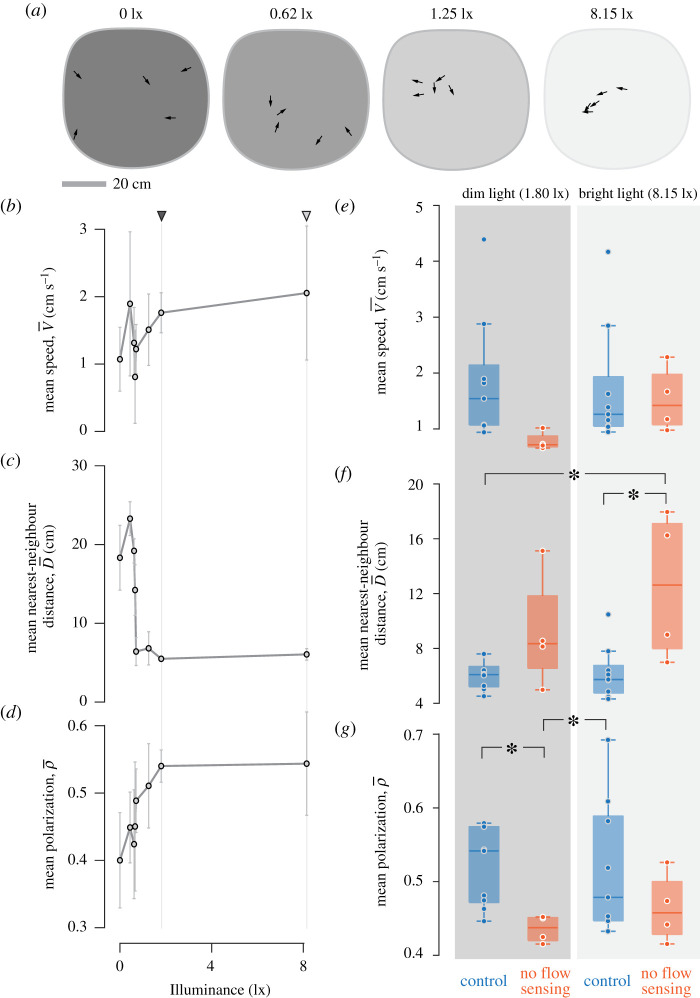Figure 3.
The effects of light and flow sensing on schooling kinematics for long-duration recordings. (a) Arrows denote the position and orientation of fish from video stills of experiments performed at different levels of illuminance. (b–d) Measurements of schooling kinematics among multiple schools under varying light intensity. Triangles above the panels and vertical lines designate the light intensities at which we performed additional experiments at dim (dark grey) and bright (light grey) light. Circles indicate the mean value (±1 s.d.) for the (b) mean speed, (c) mean nearest-neighbour distance, and (d) polarization among the schools (3 < n < 5). (e–g) The effects of lateral line manipulation on schooling kinematics at two light intensities. The (e) mean speed, (f) nearest-neighbour distance and (g) polarization among experiments performed under dim (dark grey area, 1.80 lx) and bright (light grey area, 8.15 lx) light. Fish were either treated such that their lateral line system was compromised (red), or served as a control (blue). The box plots indicate the values for individual groups (circles, 4 < n < 8), the median value (centre line), with the box designating the first and third quartiles and the range indicated by the error flags. Values for the mean speed (b,e) and mean nearest-neighbour distance (c,f) were calculated as the mean over time of the mean value among individuals for a school. Significant differences between groups (p < 0.05) indicated by the asterisks, were found by two-way ANOVA with post hoc tests. (Online version in colour.)

